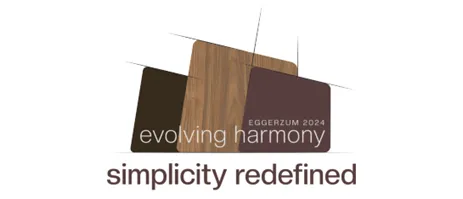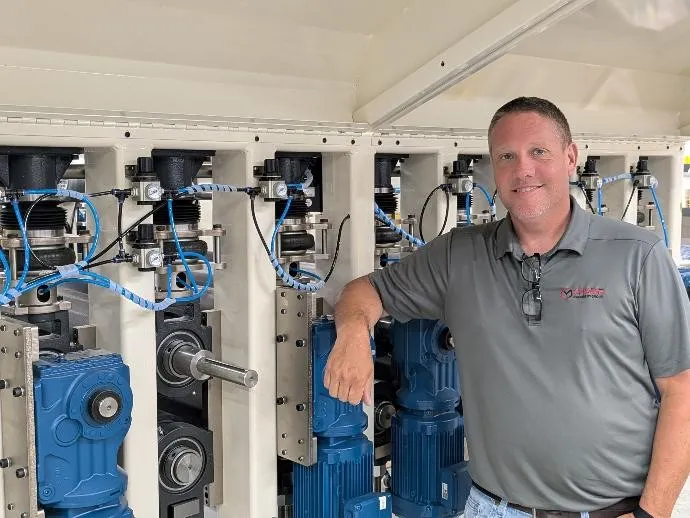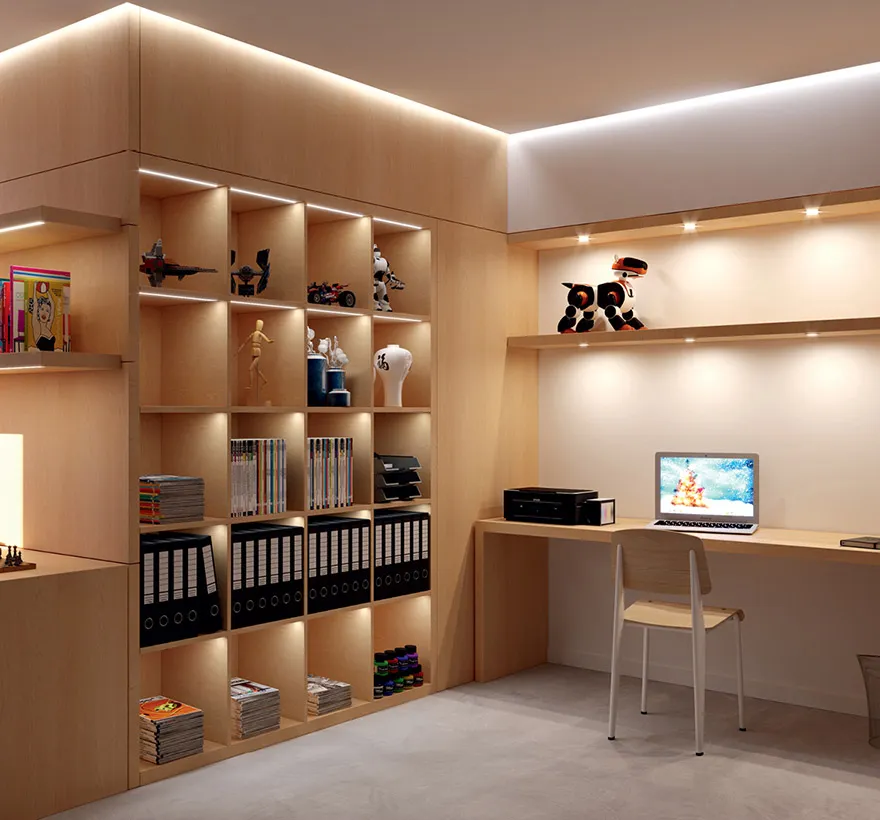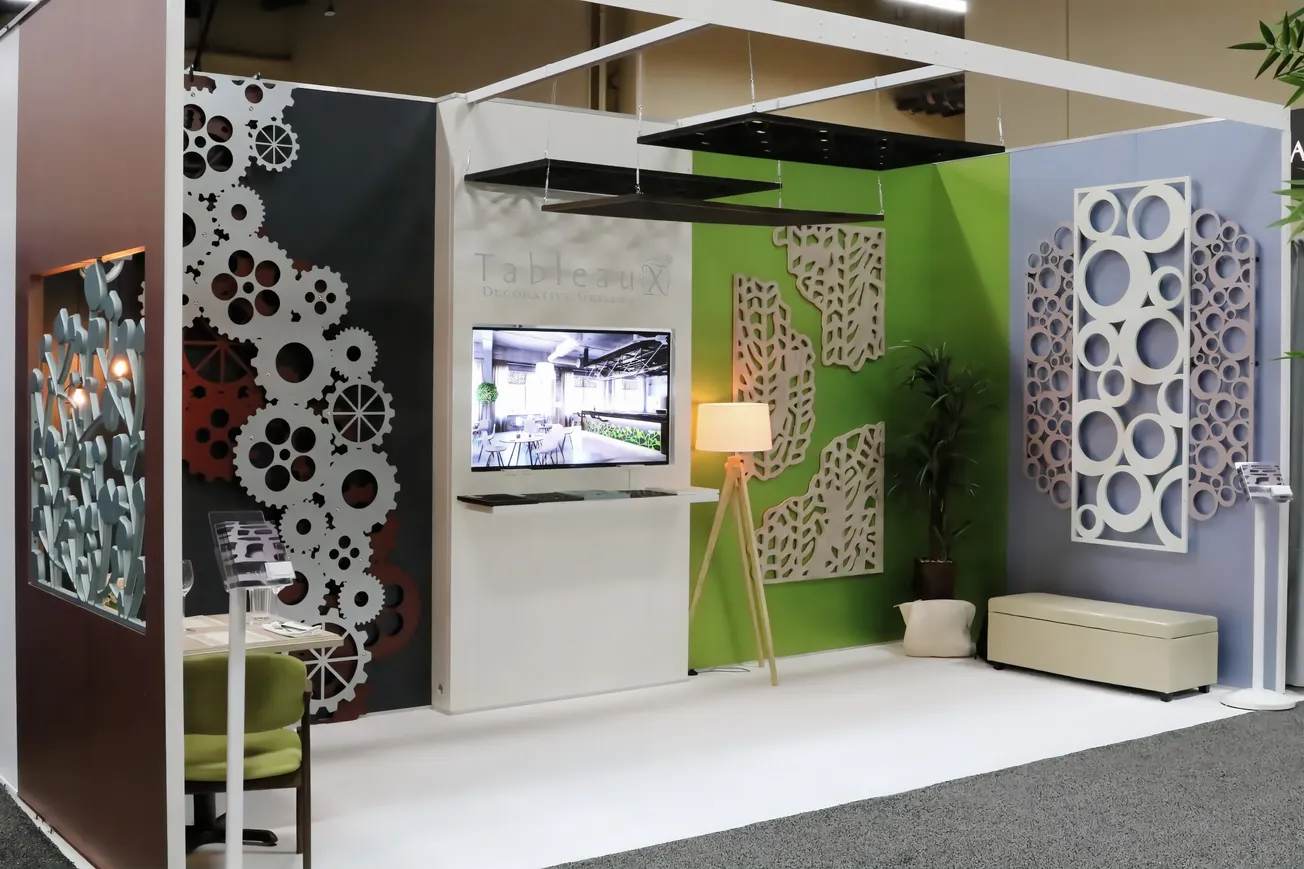Table of Contents
Shine On!
High Quality High-Gloss Finishes Made Possible by Superior Surfacing Technology
By Leah Wheeler
High-gloss finishing imparts a sleek, bold sheen to interior residential and commercial surfaces. The perfect high-gloss surface is a fusion of maximum gloss level, smoothness, depth effect, scratch resistance, cost effectiveness and technical feasibility.
To be considered high gloss, a surface must reflect at least 80-85 percent of incoming light, as measured by a reflectometer. At the top of the scale of high-gloss materials is back-painted glass. Painted glass is 100 percent reflective and thus has impeccable gloss properties.
But glass is costly, fragile and impractical in many residential and commercial applications. Working with glass or even transporting and installing it is risky due to its weight and tendency to crack or shatter.
Another high-end option for high-gloss surfacing is solid acrylic. Solid acrylic panels have a superior gloss level throughout, and they can be refinished or repaired when scratched or marred. They are waterproof and do not warp or discolor when exposed to sun. However, while solid acrylic panels are popular in luxury European kitchens, they are extremely heavy and cost-prohibitive in many other applications.
As the market for high-gloss surfaces grew over the years, the need for more affordable solutions and variety in design became apparent. Fortunately, materials technology and manufacturing processes have advanced and enabled new manufacturing breakthroughs, and today truly high quality high-gloss finishes can be achieved at a relatively modest price using a technique that involves thin sheets of acrylic laminated with PUR glue onto melamine-faced wood-based panels.
The surface aesthetic of these laminated panels rivals that of solid acrylic, and thermally fused laminate surfaces rate favorably in terms of quality, strength, luminosity, durability and scratch resistance.
Senoplast’s Senosan AM1800TopX, for example, creates a surface gloss that has been compared to that of a polished, gleaming concert grand piano.
“Senosan is close to back-painted glass in terms of appearance,” said Manuel Romero, sales manager for Senoplast USA. “Senosan acrylic laminated panels are lighter in weight than glass or solid acrylic, plus they have superior scratch resistance, are easy to clean and polish, and they offer intense color depth as well as tight color tolerance.”
Senosan AM 1800 TopX offers flawless surface consistency, high resiliency, low distortion levels, UV stability and chemical resistance enabled by Senoplast’s proprietary UV coating process over the acrylic layer.
“Importantly, unlike sheets of glass, acrylic laminated panels can be cut, drilled and edge-banded with conventional woodworking tools found in most furniture manufacturing shops,” Romero said. “The fact that these panels do not require any special equipment adds flexibility during production and installation.”
Senosan is used by many renowned European fabricators, he said, from high-end fitted kitchen and cabinet manufacturers, such as Poggenpohl, Miele, and Bulthaup, to mass market manufacturers such as IKEA. Senosan is suitable for all one-dimensional and two-dimensional vertical furniture applications and is available from Senoplast in 19 stock colors, including solid and metallic colors with matching edge bands to complete the look of finished components.
Two producers in North America manufacture and distribute high-gloss acrylic panels that incorporate Senoplast’s premium high-gloss technology and use the Senosan AM 1800 TopX product. They are Premier EuroCase in Denver, which markets a branded product called Reflekt, and Thermoform d'Amérique, located in Nicolet, Quebec, which markets the product under the Acrylux brand. Both have invested in high-tech clean room environments and PUR line systems for production of premium quality high-gloss acrylic laminate panels.
Other approaches to achieving high-gloss surfaces range from applying high-gloss polyurethane lacquer to wooden substrate material, PET, melamine and even PVC. Specialty overlays on traditional laminates, both HPL and TFM, can be used to achieve a glossy finish as well as impart texture. Various types of plastic film can be heat wrapped to MDF panels in a vacuum press to give glossy surfaces a three-dimensional effect and to create contoured edges. The plastic used in these three-dimensional laminates is typically vinyl, OPP or polyester based.
Surfaces made in these ways are generally less reflective and have less color depth and luster than laminated panels with acrylic or solid acrylic panels. They are also less durable and often exhibit a noticeable orange-peel effect over time. Knowledgeable retailers tend to steer consumers away from these types of glossy surfaces, noting that they show fingerprints, marks and scratches, and they are difficult to maintain.
The growing appeal of high gloss
The popularity of high gloss has soared since it was introduced by leading-edge Italian design houses more than 20 years ago, and today high-gloss treatments can be seen throughout the world in applications ranging from signage and displays to cabinetry, furniture and paneling.
High gloss first came into vogue in European luxury markets, and within a few years the trend had gained favor throughout Europe. It took significant advances in materials technology and panel manufacturing processes that made high quality high-gloss finishes more accessible and affordable for the trend to spread to Asia and eventually to North America. The Canadian markets of Toronto and Quebec embraced the look first; then about five years ago, it began to penetrate some large U.S. urban centers, such as Los Angeles and New York. Today, high gloss is definitely “in” and can be found just about everywhere, even in what might be considered more traditional markets, said Senoplast’s Romero.
The growing popularity of modern European style interior decor, such as frameless furniture and slab door cabinets, bodes well for continuation of the trend toward high-gloss finishes, Romero said. “We see the trend growing more and more,” he said.
High-gloss surfacing can achieve limitless design effects. In a home, a touch of glossy sheen can serve as an eye-catching accent or create a dazzling contrast against other natural surfaces, such as textured wood or matte paneling. A high-gloss surface can give a small, narrow or tight space a sense of openness.
High-gloss white cabinetry gives even a small apartment kitchen a sleek, clean, modern sensibility and emphasizes the dimensionality of the area.
“Colors that are trending in in-home applications are gray, beige, and antique white, as well as the classics – white, black and red,” Romero said. “We also see a lot of people teaming acrylics with matte surfaces in creative ways.”
Retail applications include vertical displays, doors, trim, and columns, where a glossy surface attracts eyeballs and makes a bold, exciting statement.
“We are expanding and developing new markets for acrylic laminated panels also, including applications in commercial office furniture, hospitality settings and health care, where acrylic’s anti-microbial characteristics make it a natural,” Romero said.
High quality high-gloss acrylic laminate is defining a new category of interior finishes that combines the elegance of glass and the warmth of piano gloss with the durability and robust characteristics of laminated panels.
High-gloss acrylic offers visual and tactile allure, as well as practical appeal, and it is finding exciting new applications in both residential and commercial settings. The stunning appeal of luminous, lustrous, high-gloss acrylic finish has clearly captured the imaginations of designers and homeowners, and it will likely be trending for years to come.
High-gloss surfacing can achieve limitless design effects. In a home, a touch of glossy sheen can serve as an eye-catching accent or create a dazzling contrast against other natural surfaces, such as textured wood or matte paneling. A high-gloss surface can give a small, narrow or tight space a sense of openness.






